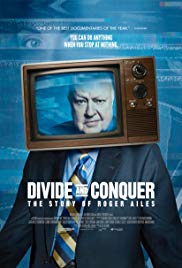Documentaries Are Not Encyclopedias
If you haven’t yet seen the recently released Divide and Conquer: The Story of Roger Ailes, check it out! Directed by my former graduate student Alexis Bloom, this biography of the founder of Fox News exemplifies a powerful storytelling principle.
Bloom and her producer Alex Gibney had to decide which events in Ailes’s life were important to include and which juicy stories could be cut.
Check out the Build series interview in which Bloom and Gibney discuss making the film. At 29:20, a member of the audience asks, “How did you choose specifically which moments to specifically focus on?”
Bloom replied, “I would bore you senseless if I told you the rationale for what we didn’t include. There was stuff we didn’t include, because you can’t be an encyclopedia.”
In covering the life of an individual–or even an historic event–a documentary should be truthful, but it can’t be an almanac or a compendium. While Bloom didn’t talk about her rationale for cutting scenes, here are four criteria that work:
- Does the scene support the film’s theme? (More on theme)
- Does another scene play the same role as this scene? Choose one.
- Is it visually engaging, or static?
- Does the scene advance the drama, or diminish it?
We are currently editing an historical film to which we are applying these criteria, to ensure the film doesn’t tank under the weight of unnecessary scenes. After all, we don’t want to bore the viewer senseless.
One other note: editors are often able to judge a scene’s effectiveness better than members of the filmmaking team who were on the scene. Living through an event or interview often skews one’s perspective. Scenes that are personally meaningful because you were there may not translate to the viewer.
